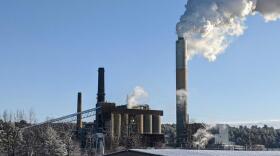A new interactive map from the Connecticut Institute for Resilience and Climate Adaptation (CIRCA) shows areas in the state that are vulnerable to environmental hazards.
Researchers made the map in English and Spanish as a way to show where pollution is coming from – and how it’s impacting nearby people. The launch coincides with a newly-strengthened state environmental justice law, as advocates look for new ways to raise the profile of historically marginalized communities overburdened by pollution.
The map features indicators like health sensitivities, a community's wealth, and its proximity to environmental hazards such as landfills, said Yaprak Onat, co-project manager and associate director of research at CIRCA.
“What this tool does is give a first glance screening of who's taking the toll more – who is disproportionately affected by possible pollution burden,” Onat said.
CIRCA made the tool as part of statewide plans to mitigate climate change by identifying communities most at risk. Several other states have implemented similar environmental justice screening tools.
Since its initial release in Connecticut, community members and stakeholders have had the chance to provide suggestions, such as adding data on tree canopy or energy costs.
The map can be viewed by filtering to individual factors, or by combining several ones together. That’s useful in evaluating Connecticut’s cumulative impacts of pollution and health burdens, said Mary Buchanan, a community resilience planner at CIRCA.
“Having this state-level tool allows us to sort of get at that issue more, and to have transparency about where those disparities are within the state,” Buchanan said.
CIRCA is seeking feedback on the map until Monday, July 31. A version with suggested improvements will be released in August.
Mapping out environmental inequities could also spur investment in areas that have suffered from pollution for decades, said Dr. Mark Mitchell, co-chair of the state’s Equity and Environmental Justice Advisory Council.
“My hope is that the tool will guide the future investment by the state, in communities that have been traditionally disinvested for historical reasons, due to race and income,” Mitchell said.
Kat Morris, founder of the environmental justice group Seaside Sounds, echoed that hope.
“Given the harsh realities of environmental racism in CT, seeing exactly how one’s community is burdened with pollution and health inequities can be daunting and maybe even a little bit depressing — but knowing the truth, the full truth, is absolutely necessary for change,” she said.





